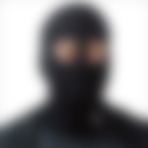Joshua Portway is a UK-born artist and computer programmer and Lise Autogena, a Danish-born artist and Professor of Cross-Disciplinary Art at the Cultural Communication and Computing Research Institute (C3RI) at Sheffield Hallam University. Based in London, they have worked together since the early 90’s using custom built technology and visualisations of global real-time data to develop large scale multimedia installations, site-specific works and performances, usually in collaboration with organisations, communities and experts across many specialised fields.
Recent projects include: Kuannersuit; Kvanefjeld, a film investigating the challenges of siting a uranium mine in Greenland, the difficult decisions and tradeoffs faced by a culture seeking to escape a colonial past and define its own identity in a globalised world (Bildmuseet, Sweden 2016), Cities like Plants, a robotic installation exploring how the regulatory systems underlying plant growth relate to principles of city planning (Cambridge University, 2016), Black Shoals; Dark Matter, a long term exploration into data visualisation and financial belief systems, visualising the financial markets as a planetarium, where stars representing companies on the world markets form constellations and galaxies depending on the movements on the markets. Live trading on the stars generate light, which provides food for an ecology of artificial life creatures that live and evolve amongst the stars (Somerset House, ArtScience Museum Singapore 2016, Nikolaj Kunsthal 2004, Tate Britain 2000). Untitled (superorganism) an installation simulating the phenomenon of the “ant mill”, a side effect of the self-organizing structure of certain ant colonies, where hundreds of thousands of ants can walk in a circle until overcome by exhaustion and, eventually, death (Abattoirs Museum 2014, ZKM 2015). Most Blue Skies, an enquiry into the changing psychological perceptions of the sky space. The project responds to real-time changes in the atmosphere using a complex system of satellite data acquisition and atmospheric simulations, in order to visualize and locate the currently ‘bluest sky’ in the world. (Domaine de Chamarande, 2012, Tensta Kunsthal, 2010, Nikolaj Kunsthal/COP15, 2009, Gwangju Biennial 2006) and Foghorn Requiem, a site-specific performance - a requiem for the lost sound of the foghorn, composed by Orlando Gough and performed by three brass bands, the Souter Lighthouse foghorn and fifty ships on the North Sea. Custom designed computer software and hardware dynamically compensates for time delays from horns being played on ships miles away from the listeners, allowing the timbral effects of distance and landscape to be directly incorporated into the music (Souter Lighthouse, North Sea, UK, 2013).

